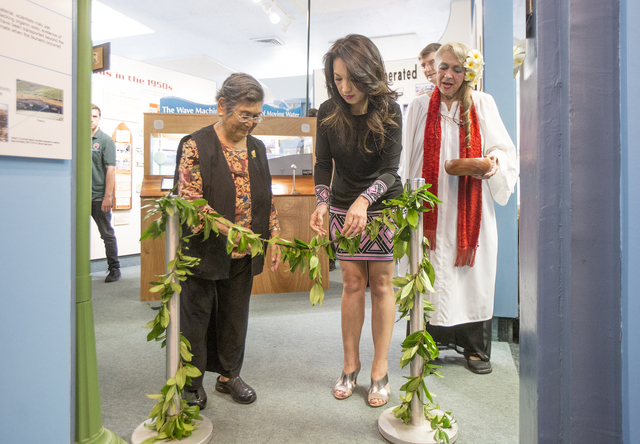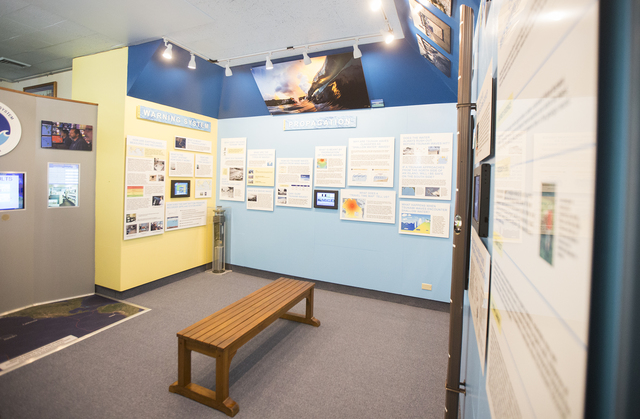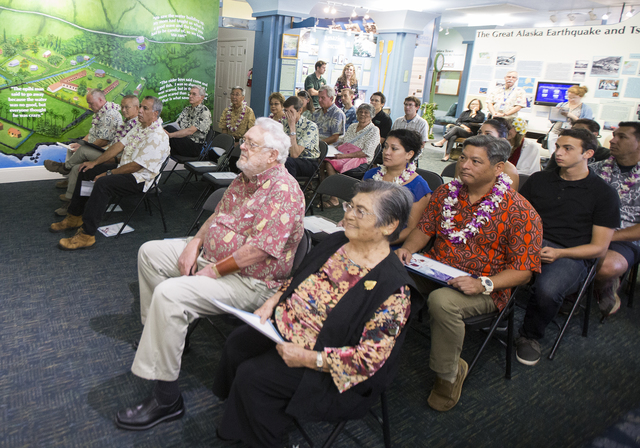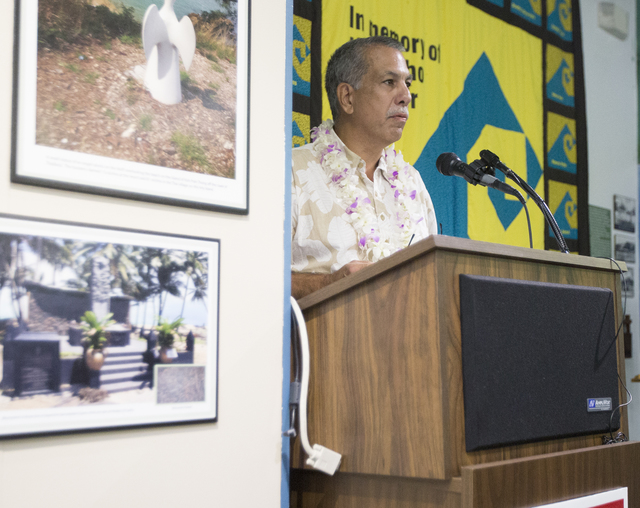When it comes to tsunamis, there’s no such thing as too much information. ADVERTISING When it comes to tsunamis, there’s no such thing as too much information. A recent addition to the Pacific Tsunami Museum, the Science Room, is a
When it comes to tsunamis, there’s no such thing as too much information.
A recent addition to the Pacific Tsunami Museum, the Science Room, is a way to add to that knowledge bank.
The room features five sections that explore every aspect of tsunami science, from how the waves are generated to how tsunami warning systems work. Work on the new addition began a year and a half ago, said museum executive director Marlene Murray.
Museum staff joined state and county officials as well as earth science and safety experts from around the state Saturday for an open house event to introduce the new room, which was blessed by kahu Leolani Hao.
Saturday’s event also commemorated Tsunami Awareness Month, which began April 1.
On April 1, 1946, a tsunami generated by an Aleutian Islands earthquake destroyed downtown Hilo, killing 159 people. That event was the major push for development of the seismic seawave warning system used today.
Kevin Richards of Hawaii State Civil Defense, one of several featured speakers during a morning ceremony, noted how far that system has come in the past decades.
“It’s such a phenomenal advancement,” he said. When an earthquake occurs, monitors at the Pacific Tsunami Warning Center can tell how large of a tsunami will form, where it’s heading and what populations need to be moved.
“We continue to learn from each and every event,” said Hawaii County Civil Defense Administrator Darryl Oliveira.
Interactive exhibits in the Science Room explain the subduction process that creates undersea earthquakes, and allow visitors to create their own earthquake (by stomping on a world map) and determine whether their force created a tsunami.
“We’re very proud of what we do,” said Jim Wilson, president of the museum board of directors. He added that there is “still a lot to do,” particularly in terms of educating younger generations who don’t have direct experience with tsunamis.
“We will keep trying to let people know it’s not a matter of if, it’s a matter of when,” Wilson said.
That’s where the Pacific Tsunami Museum comes in, said Vern Miyagi, administrator of emergency management for the state of Hawaii.
“This facility enables us to never forget,” he said.
The afternoon featured presentations by Oliveira, Gerard Fryer of the Pacific Tsunami Warning Center, Donald Thomas, director of the Center for the Study of Active Volcanoes, Cindi Preller of the International Tsunami Information Center, and Paul Okubo of the United States Geologic Survey.
Millie Uchima, a survivor of the 1946 tsunami and museum docent of 22 years, offered her own remembrances of the tragedy.
Representatives from the offices of Gov. David Ige and U.S. Sen. Brian Schatz presented proclamations in honor of the event, thanking the museum for its continued efforts to raise awareness while reflecting on the past. A proclamation from Hawaii County Mayor Billy Kenoi recognizing Tsunami Awareness Month was read.
“Never forget,” Oliveira said. “Never consider that we know all that we need to know.”
Email Ivy Ashe at iashe@hawaiitribune-herald.com.






